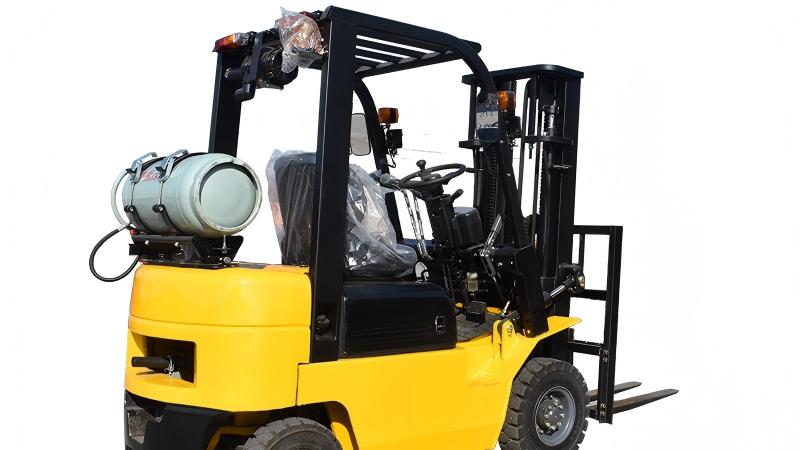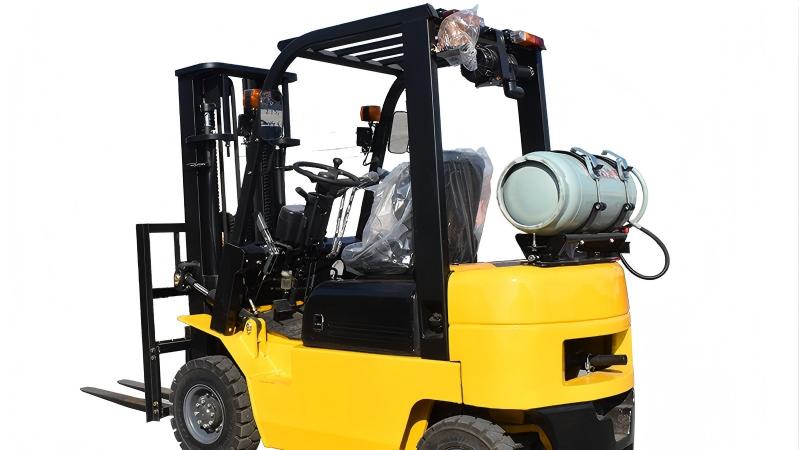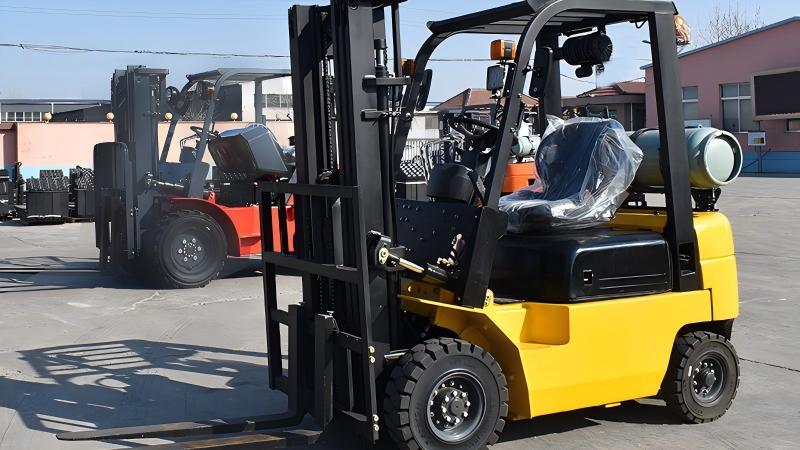What is a Dual-Fuel Forklift and How Does It Work?
1. Introduction
Forklifts are essential machines in warehouses, factories, and many industries worldwide, helping move heavy loads efficiently and safely. Among the many types of forklifts available, the dual-fuel forklift stands out due to its flexibility and efficiency. This article will explore what a dual-fuel forklift is, how it operates, its benefits, and its applications.
2. What is a Dual-Fuel Forklift?
A dual-fuel forklift is a type of forklift powered by two different fuels, typically liquefied petroleum gas (LPG) combined with gasoline or diesel. This setup allows the machine to switch between fuels depending on availability or operational needs. Compared to single-fuel forklifts, dual-fuel models offer greater versatility, often combining the benefits of cleaner burning LPG with the power of gasoline or diesel.
3. How Does a Dual-Fuel Forklift Work?
The forklift has an engine designed to operate on two fuel sources. It uses an LPG tank alongside a gasoline or diesel fuel tank. The operator can switch between fuels manually or through an automated system. When running on LPG, the forklift benefits from cleaner combustion and lower emissions. On gasoline or diesel, it gains longer runtime and sometimes more power. Safety features ensure that fuel storage and switching are secure and efficient.
4. Advantages of Dual-Fuel Forklifts
Fuel Flexibility: Operators can choose fuels based on cost, availability, and environmental requirements.
Lower Emissions: Running on LPG reduces harmful exhaust gases, improving air quality.
Cost Efficiency: Dual-fuel forklifts can reduce fuel costs and extend operating hours.
Performance: Suitable for both indoor and outdoor use with reliable power.
Reduced Downtime: Ability to switch fuels helps avoid interruptions if one fuel source runs low.
5. Common Applications and Industries
Dual-fuel forklifts are widely used in:
Warehousing and logistics, for flexible indoor and outdoor operations.
Manufacturing plants, requiring consistent and clean-running machinery.
Construction sites, where fuel availability might vary.
Food and beverage industries, where cleaner emissions are critical.
Any environment needing both power and lower emissions.
6. Maintenance and Operational Considerations
Maintaining a dual-fuel forklift requires attention to both fuel systems. Regular inspections of fuel lines, tanks, and ignition systems are essential. Operators should be trained on fuel switching and safety protocols. Troubleshooting may involve diagnostics on both LPG and gasoline/diesel components.
7. Environmental Impact
By incorporating LPG, dual-fuel forklifts produce fewer carbon monoxide and particulate emissions compared to diesel-only models. This helps companies meet environmental regulations and sustainability goals, especially in indoor or urban environments.
8. Comparison with Other Forklift Types
Gasoline forklifts: High power but higher emissions.
Diesel forklifts: Strong power outdoors but not ideal indoors due to emissions.
Electric forklifts: Zero local emissions but limited runtime and power.
Dual-fuel forklifts: Balanced solution offering cleaner emissions and flexibility.
9. Challenges and Limitations
Dual-fuel forklifts may have higher upfront costs and more complex maintenance. Fuel availability for both sources must be ensured. Operators need training to manage both fuel systems safely.
10. Future Trends and Innovations
The forklift industry is moving toward improved fuel efficiency, better emission controls, and smart systems that monitor fuel use. Dual-fuel models may integrate with IoT platforms for fleet management and performance optimization.
11. Conclusion
Dual-fuel forklifts provide a versatile, efficient, and cleaner alternative for material handling needs across industries. Understanding their operation, advantages, and challenges helps businesses decide if they are the right choice for their fleet.
Post time:Jul.07.2025



